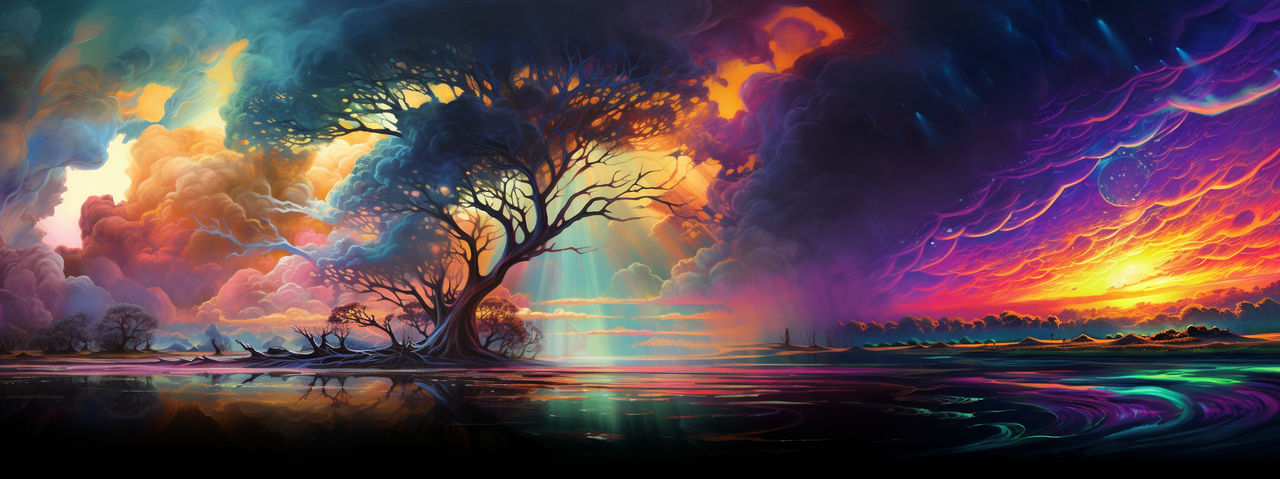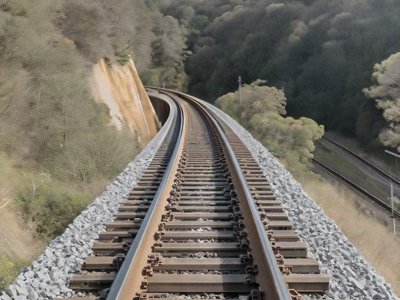Midjourney Prompts for Realistic Photos
Realism comes from light, lens, and restraint. These parameter combinations and lighting vocabulary will help you create lifelike images that avoid the uncanny valley. Learn how to craft prompts that produce photorealistic results consistently.
The Foundation of Realistic Prompts
Understanding the Uncanny Valley
The uncanny valley occurs when AI-generated images are almost realistic but have subtle flaws that make them feel unsettling. To avoid this, focus on natural lighting, realistic proportions, and authentic details rather than trying to create "perfect" images.
Why Realism Matters
Realistic images are more believable, relatable, and useful for professional applications. They can be used in marketing, documentation, and creative projects without the distraction of obvious AI artifacts.
The Role of Constraints
Paradoxically, adding constraints often produces better results. By limiting your prompt to realistic elements, you guide the AI away from fantastical interpretations and toward believable outcomes.
Baseline Prompt Structure
The Formula for Success
Subject + realism tag + lens + lighting + time of day + color grade + film stock + aspect ratio = realistic results.
Example: "Candid street portrait, natural skin texture, 50mm lens, golden hour backlight, subtle contrast, Kodak Portra 400, --ar 3:2"
Breaking Down Each Element
Subject: Be specific about what you want to see. "Portrait of a woman" is better than "person."
Realism tag: Include terms like "photorealistic," "natural skin texture," or "lifelike details."
Lens: Specify focal length for authentic perspective. 35mm, 50mm, and 85mm are most natural.
Lighting: Describe the light source, direction, and quality for realistic illumination.
Time of day: Specify when the photo was taken for appropriate lighting conditions.
Color grade: Describe the overall color treatment for authenticity.
Film stock: Reference specific films for color science and grain characteristics.
Aspect ratio: Use photo-native ratios like 3:2 or 4:3 for realistic proportions.
Parameters That Matter
Aspect Ratio (--ar)
3:2 ratio: Most DSLR cameras use this ratio, making it feel natural and familiar.
4:3 ratio: Classic film camera ratio, good for portraits and landscapes.
16:9 ratio: Avoid for photos - this is video ratio and can feel unnatural.
1:1 ratio: Square format can work but may feel less photographic.
Stylization Control
Low stylize: Produces more realistic results by reducing artistic interpretation.
Default stylize: Balanced approach that maintains realism while allowing some artistic flair.
High stylize: Avoid for realistic photos - adds too much artistic interpretation.
Quality Settings
--q 2: High quality, good for most realistic photos.
--q 1: Standard quality, faster generation, still good for realism.
--q 0.5: Lower quality, faster, but may reduce realism.
Lighting Vocabulary for Realism
Natural Light Sources
Golden hour: Warm, directional light that creates natural shadows and highlights.
Blue hour: Cool, diffused light just before sunrise or after sunset.
Overcast: Soft, even lighting that reduces harsh shadows and creates natural skin tones.
Window light: Soft, directional light that mimics natural indoor illumination.
Backlight: Light coming from behind the subject, creating natural rim lighting.
Light Quality Descriptors
Soft: Diffused light that creates gentle shadows and natural skin tones.
Hard: Direct light that creates sharp shadows and high contrast.
Diffuse: Scattered light that reduces shadows and creates even illumination.
Directional: Light coming from a specific direction, creating natural shadows.
Bounce: Reflected light that fills shadows naturally.
Time-Based Lighting
Morning light: Cool, directional light that creates natural shadows.
Midday light: Harsh, overhead light that can be challenging but realistic.
Afternoon light: Warm, angled light that creates natural depth.
Sunset light: Warm, horizontal light that creates dramatic but natural shadows.
Lens and Perspective
Focal Length Selection
24mm: Wide angle, good for environmental portraits and landscapes.
35mm: Natural wide angle, good for street photography and environmental portraits.
50mm: Standard lens, most natural perspective for portraits and general photography.
85mm: Short telephoto, flattering for portraits with natural compression.
135mm: Medium telephoto, good for candid portraits and street photography.
Perspective Descriptors
Eye level: Natural perspective that mimics human vision.
Low angle: Dramatic perspective that can feel cinematic but realistic.
High angle: Overhead perspective that can feel documentary-style.
Close-up: Intimate perspective that shows detail without distortion.
Environmental: Shows subject in context with natural surroundings.
Color and Film Science
Film Stock References
Kodak Portra 400: Natural skin tones, warm highlights, natural grain.
Fujifilm Pro 400H: Cooler tones, natural shadows, fine grain.
Ilford HP5 Plus: Black and white with natural contrast and grain.
Kodak Ektar 100: Vibrant colors, high saturation, natural contrast.
Fujifilm Velvia 50: High saturation, natural contrast, fine grain.
Color Grade Descriptors
Natural: Unprocessed colors that look authentic and realistic.
Subtle contrast: Slight enhancement that maintains realism.
Warm tones: Slightly enhanced warmth that feels natural and inviting.
Cool tones: Slightly enhanced coolness that feels natural and calm.
Neutral: Balanced colors that don't draw attention to processing.
Avoiding Common Pitfalls
The "No Text" Rule
Always add "no text, no writing, no letters, no words, visual only" to prevent unwanted text in your images. This is crucial for realistic photos.
Hand and Face Realism
Hands: Add "natural hands, realistic fingers, no extra digits" to avoid common AI hand issues.
Faces: Use "natural skin texture, realistic features, natural expression" for authentic faces.
Eyes: Include "natural eye color, realistic pupils, natural gaze" for lifelike eyes.
Composition and Framing
Natural framing: Avoid overly perfect compositions that feel staged.
Realistic depth: Use natural depth of field rather than extreme bokeh.
Natural cropping: Avoid unusual crops that feel artificial.
Advanced Realism Techniques
Texture and Detail
Natural skin texture: Includes pores, natural variations, and realistic detail.
Realistic fabric: Natural folds, wrinkles, and material properties.
Environmental detail: Natural wear, dirt, and realistic imperfections.
Light interaction: How light naturally interacts with different surfaces.
Atmospheric Effects
Natural haze: Subtle atmospheric perspective that adds depth.
Realistic shadows: Natural shadow density and color.
Light scattering: How light naturally diffuses through the atmosphere.
Natural reflections: Realistic reflections on surfaces like water or glass.
Prompt Examples by Category
Portrait Photography
"Professional headshot, natural skin texture, 85mm lens, soft window light, natural expression, Kodak Portra 400, --ar 3:2, no text, no writing, no letters, no words, visual only"
"Candid street portrait, natural skin texture, 50mm lens, golden hour backlight, natural expression, Fujifilm Pro 400H, --ar 3:2, no text, no writing, no letters, no words, visual only"
Landscape Photography
"Mountain landscape, natural lighting, 35mm lens, golden hour, natural colors, Kodak Ektar 100, --ar 3:2, no text, no writing, no letters, no words, visual only"
"Urban street scene, natural lighting, 28mm lens, overcast day, natural contrast, Fujifilm Pro 400H, --ar 3:2, no text, no writing, no letters, no words, visual only"
Still Life Photography
"Coffee cup on wooden table, natural window light, 50mm lens, natural materials, subtle contrast, Kodak Portra 400, --ar 3:2, no text, no writing, no letters, no words, visual only"
Testing and Iteration
The Iterative Process
Start with a basic prompt, then refine based on results. Add or remove elements to achieve the desired level of realism.
A/B Testing
Create variations of your prompt to see which elements produce the most realistic results. Test different lighting, lenses, and film stocks.
Learning from Results
Analyze what works and what doesn't. Pay attention to which elements consistently produce realistic results and which ones introduce artifacts.
Professional Applications
Marketing and Advertising
Realistic images can be used in professional marketing materials without obvious AI generation.
Product Photography
Create realistic product images for e-commerce and marketing without expensive photo shoots.
Documentation
Generate realistic images for technical documentation and training materials.
Creative Projects
Use realistic images as starting points for further artistic development.
Realistic images are about constraints. Fewer adjectives, better nouns, precise optics. The key to creating realistic photos with Midjourney is understanding that less is often more. Focus on natural elements, use specific technical terms, and avoid over-engineering your prompts. Start with the basic structure, test different combinations, and gradually refine your approach. Remember, the goal is to create images that look like they were taken with a camera, not generated by AI. With practice and patience, you can consistently produce photorealistic results that serve your creative and professional needs.
Troubleshooting Common Issues
When Images Look Too Artificial
Problem: Images have a plastic, overly perfect appearance. Solution: Add "natural imperfections, subtle grain, realistic texture" and reduce stylization.
Problem: Colors look oversaturated and unnatural. Solution: Use "muted colors, natural saturation, subtle contrast" and reference specific film stocks.
Problem: Lighting feels flat and unrealistic. Solution: Specify light direction, quality, and time of day more precisely.
Fixing the Uncanny Valley
Problem: Faces look almost human but feel unsettling. Solution: Add "natural skin texture, realistic pores, natural expression, no perfect symmetry."
Problem: Hands look deformed or have extra fingers. Solution: Include "natural hands, realistic fingers, natural proportions, no extra digits."
Problem: Eyes look dead or artificial. Solution: Use "natural eye color, realistic pupils, natural gaze, natural catchlights."
Technical Issues
Problem: Images are too blurry or soft. Solution: Add "sharp focus, crisp details, high resolution" and use --q 2.
Problem: Composition feels unnatural or staged. Solution: Use "candid moment, natural pose, environmental context, documentary style."
Problem: Aspect ratio feels wrong for photography. Solution: Stick to 3:2 or 4:3 ratios and avoid 16:9 for photos.
Advanced Prompt Engineering
The Art of Negative Prompts
Sometimes what you don't want is as important as what you do want. Use negative prompts to guide the AI away from common problems:
Example negative prompt: "--no text, --no writing, --no letters, --no words, --no perfect symmetry, --no plastic skin, --no artificial lighting, --no oversaturated colors"
Prompt Weighting and Emphasis
Use parentheses to emphasize certain elements: (natural skin texture:1.2) or (realistic lighting:1.3)
Example: "Portrait of a woman, (natural skin texture:1.2), (soft window light:1.3), 85mm lens, Kodak Portra 400, --ar 3:2"
Contextual Prompts
Provide context that helps the AI understand the scene better:
Example: "Street photographer capturing a candid moment, natural lighting, 35mm lens, golden hour, documentary style, natural colors, Fujifilm Pro 400H, --ar 3:2"
Specialized Photography Styles
Street Photography
"Candid street scene, natural lighting, 35mm lens, overcast day, natural contrast, documentary style, natural colors, Fujifilm Pro 400H, --ar 3:2, no text, no writing, no letters, no words, visual only"
"Street portrait, natural skin texture, 50mm lens, golden hour backlight, natural expression, natural colors, Kodak Portra 400, --ar 3:2, no text, no writing, no letters, no words, visual only"
Documentary Photography
"Photojournalistic image, natural lighting, 28mm lens, natural moment, natural colors, documentary style, Fujifilm Pro 400H, --ar 3:2, no text, no writing, no letters, no words, visual only"
"Environmental portrait, natural lighting, 35mm lens, natural setting, natural colors, documentary style, Kodak Portra 400, --ar 3:2, no text, no writing, no letters, no words, visual only"
Fine Art Photography
"Fine art portrait, natural skin texture, 85mm lens, dramatic natural lighting, artistic composition, natural colors, Ilford HP5 Plus, --ar 4:3, no text, no writing, no letters, no words, visual only"
"Abstract natural form, natural lighting, macro lens, natural texture, artistic composition, natural colors, Kodak Ektar 100, --ar 1:1, no text, no writing, no letters, no words, visual only"
Post-Processing Considerations
What to Avoid in Prompts
Don't specify: Exact color values, specific filter names, or post-processing effects that don't exist in real photography.
Do specify: Natural color treatments, film stock characteristics, and realistic lighting conditions.
Maintaining Realism in Post
If you plan to edit the generated images, start with neutral prompts and add artistic elements later. This gives you more flexibility while maintaining the realistic foundation.
File Formats and Quality
--q 2: Use for final images that will be printed or used in high-quality applications. --q 1: Use for testing and iteration, still good quality for most uses. --q 0.5: Use only for quick concept testing, not for final images.
Version-Specific Considerations
Midjourney V6
Strengths: Better understanding of natural lighting and realistic details. Best for: Portraits, landscapes, and complex scenes. Parameters: --v 6, --ar 3:2, --q 2
Midjourney V5
Strengths: Good balance of realism and artistic interpretation. Best for: General photography, street scenes, and environmental portraits. Parameters: --v 5, --ar 3:2, --q 2
Midjourney V4
Strengths: Classic Midjourney aesthetic, good for artistic realism. Best for: Creative photography, artistic portraits, and stylized realism. Parameters: --v 4, --ar 3:2, --q 2
Building Your Prompt Library
Creating Templates
Develop base templates for different types of photography:
Portrait Template: "[Subject], natural skin texture, [lens] lens, [lighting], natural expression, [film stock], --ar 3:2, no text, no writing, no letters, no words, visual only"
Landscape Template: "[Scene], natural lighting, [lens] lens, [time of day], natural colors, [film stock], --ar 3:2, no text, no writing, no letters, no words, visual only"
Street Template: "[Scene], natural lighting, [lens] lens, [lighting condition], documentary style, natural colors, [film stock], --ar 3:2, no text, no writing, no letters, no words, visual only"
Recording Results
Keep a log of what works and what doesn't:
- Prompt used
- Results quality
- What worked well
- What could be improved
- Parameter combinations that produced the best results
The Future of AI Photography
Staying Current
AI image generation is evolving rapidly. Stay updated on:
- New Midjourney versions and features
- Parameter changes and additions
- Community discoveries and techniques
- Best practices that emerge from testing
Ethical Considerations
When creating realistic images:
- Be transparent about AI generation when appropriate
- Respect copyright and intellectual property
- Consider the impact of hyper-realistic images
- Use realistic images responsibly and ethically
Conclusion
Creating realistic photos with Midjourney is both an art and a science. It requires understanding the technical parameters, mastering the language of photography, and developing an intuitive sense of what makes an image feel authentic. The key is to start with strong fundamentals - proper aspect ratios, realistic lighting, and natural composition - then refine your approach through testing and iteration.
Remember that realism isn't about creating perfect images; it's about creating believable ones. Natural imperfections, subtle grain, and realistic lighting all contribute to the authenticity that makes an image feel real rather than generated. With practice and patience, you can develop a consistent workflow that produces photorealistic results for any application.
The most successful realistic image creators are those who understand photography first and AI second. Study real photographs, understand how light works, and learn the technical aspects of camera operation. This knowledge will inform your prompts and help you create images that not only look realistic but feel authentic to photographers and viewers alike.
Start with the basic templates provided, experiment with different combinations, and build your own library of successful prompts. Over time, you'll develop an intuitive understanding of how to craft prompts that consistently produce the realistic results you're looking for. The journey to mastering AI-generated realism is ongoing, but with the right approach, the results can be truly remarkable.


